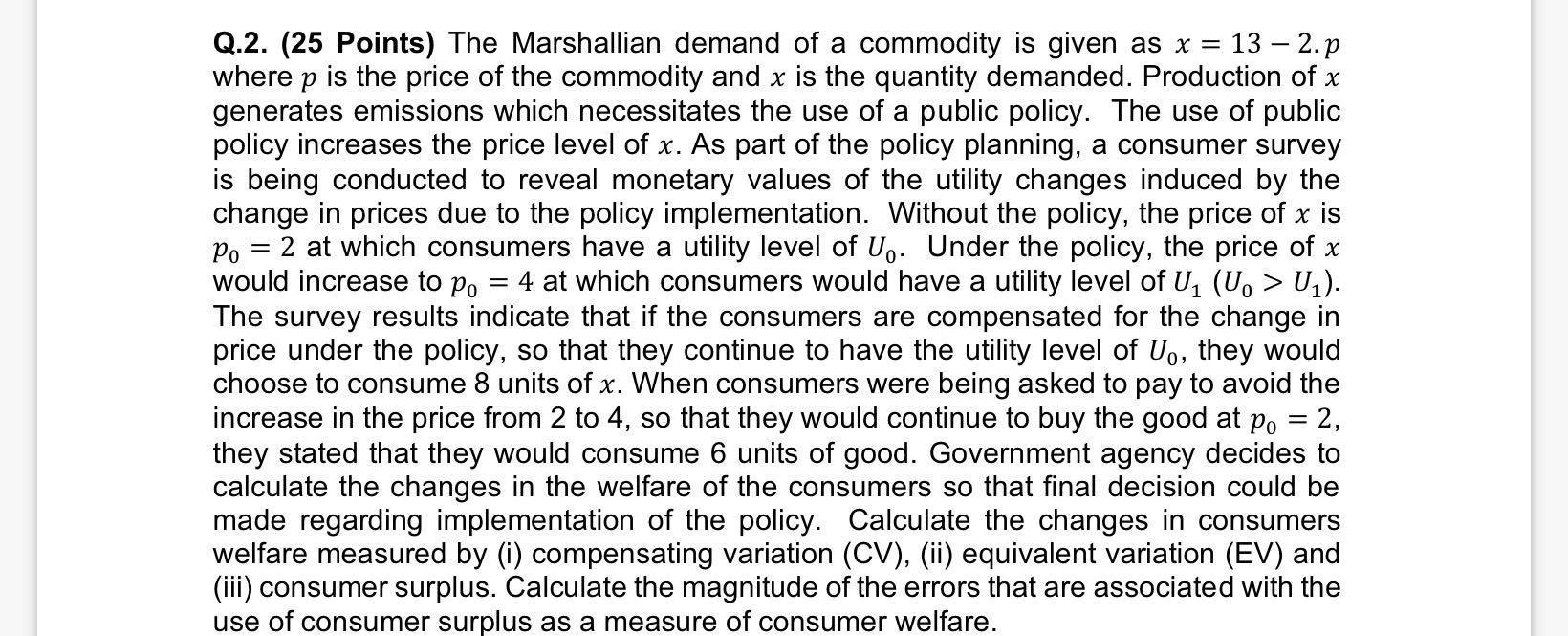
Q.2. (25 Points) The Marshallian demand of a commodity is given as x=132.p where p is the price of the commodity and x is the quantity demanded. Production of x generates emissions which necessitates the use of a public policy. The use of public policy increases the price level of x. As part of the policy planning, a consumer survey is being conducted to reveal monetary values of the utility changes induced by the change in prices due to the policy implementation. Without the policy, the price of x is p0=2 at which consumers have a utility level of U0. Under the policy, the price of x would increase to p0=4 at which consumers would have a utility level of U1(U0>U1). The survey results indicate that if the consumers are compensated for the change in price under the policy, so that they continue to have the utility level of U0, they would choose to consume 8 units of x. When consumers were being asked to pay to avoid the increase in the price from 2 to 4 , so that they would continue to buy the good at p0=2, they stated that they would consume 6 units of good. Government agency decides to calculate the changes in the welfare of the consumers so that final decision could be made regarding implementation of the policy. Calculate the changes in consumers welfare measured by (i) compensating variation (CV), (ii) equivalent variation (EV) and (iii) consumer surplus. Calculate the magnitude of the errors that are associated with the use of consumer surplus as a measure of consumer welfare. Q.2. (25 Points) The Marshallian demand of a commodity is given as x=132.p where p is the price of the commodity and x is the quantity demanded. Production of x generates emissions which necessitates the use of a public policy. The use of public policy increases the price level of x. As part of the policy planning, a consumer survey is being conducted to reveal monetary values of the utility changes induced by the change in prices due to the policy implementation. Without the policy, the price of x is p0=2 at which consumers have a utility level of U0. Under the policy, the price of x would increase to p0=4 at which consumers would have a utility level of U1(U0>U1). The survey results indicate that if the consumers are compensated for the change in price under the policy, so that they continue to have the utility level of U0, they would choose to consume 8 units of x. When consumers were being asked to pay to avoid the increase in the price from 2 to 4 , so that they would continue to buy the good at p0=2, they stated that they would consume 6 units of good. Government agency decides to calculate the changes in the welfare of the consumers so that final decision could be made regarding implementation of the policy. Calculate the changes in consumers welfare measured by (i) compensating variation (CV), (ii) equivalent variation (EV) and (iii) consumer surplus. Calculate the magnitude of the errors that are associated with the use of consumer surplus as a measure of consumer welfare







